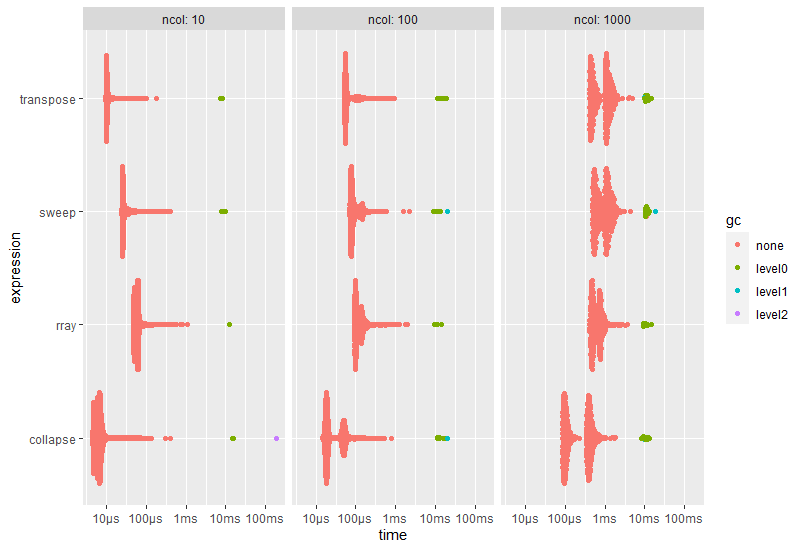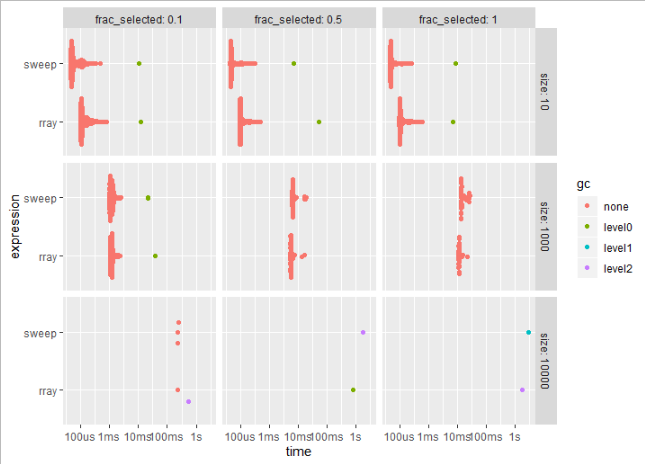I have a matrix with 5 columns and 4 rows. I also have a vector with 3 columns. I want to subtract the values in the vector from columns 3,4 and 5 respectively at each row of the matrix.
b <- matrix(rep(1:20), nrow=4, ncol=5)
[,1] [,2] [,3] [,4] [,5]
[1,] 1 5 9 13 17
[2,] 2 6 10 14 18
[3,] 3 7 11 15 19
[4,] 4 8 12 16 20
c <- c(5,6,7)
to get
[,1] [,2] [,3] [,4] [,5]
[1,] 1 5 4 7 10
[2,] 2 6 5 8 11
[3,] 3 7 6 9 12
[4,] 4 8 7 10 13



mat %*% diag(1/dev)) can't easily be translated to subtraction.(mat %*% diag(1/dev) -1) %*% diag(dev)is both ugly & slower that the double-transpose :\ – Implore